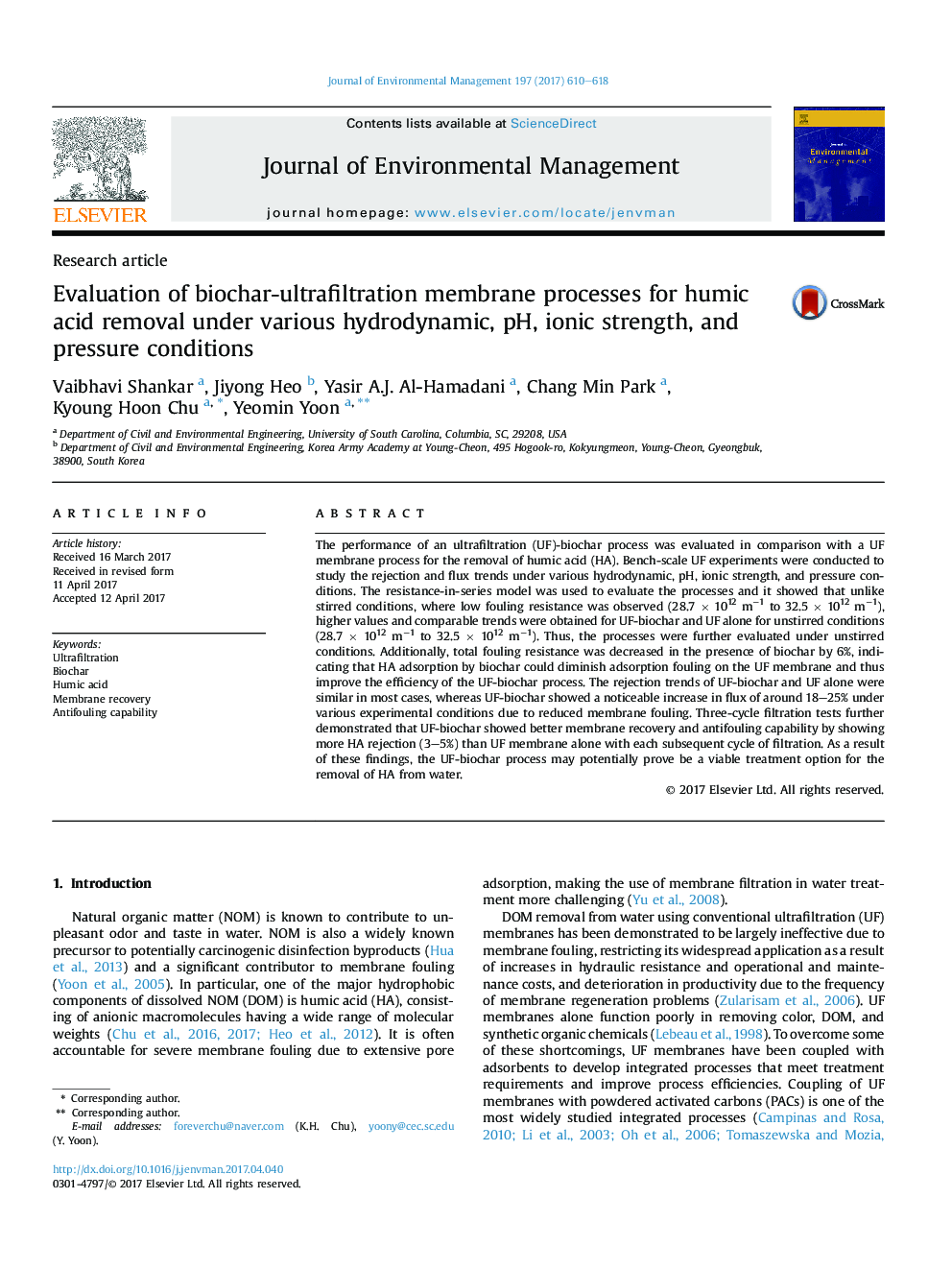| Article ID | Journal | Published Year | Pages | File Type |
|---|---|---|---|---|
| 5116985 | Journal of Environmental Management | 2017 | 9 Pages |
Abstract
The performance of an ultrafiltration (UF)-biochar process was evaluated in comparison with a UF membrane process for the removal of humic acid (HA). Bench-scale UF experiments were conducted to study the rejection and flux trends under various hydrodynamic, pH, ionic strength, and pressure conditions. The resistance-in-series model was used to evaluate the processes and it showed that unlike stirred conditions, where low fouling resistance was observed (28.7Â ÃÂ 1012Â mâ1 to 32.5Â ÃÂ 1012Â mâ1), higher values and comparable trends were obtained for UF-biochar and UF alone for unstirred conditions (28.7Â ÃÂ 1012Â mâ1 to 32.5Â ÃÂ 1012Â mâ1). Thus, the processes were further evaluated under unstirred conditions. Additionally, total fouling resistance was decreased in the presence of biochar by 6%, indicating that HA adsorption by biochar could diminish adsorption fouling on the UF membrane and thus improve the efficiency of the UF-biochar process. The rejection trends of UF-biochar and UF alone were similar in most cases, whereas UF-biochar showed a noticeable increase in flux of around 18-25% under various experimental conditions due to reduced membrane fouling. Three-cycle filtration tests further demonstrated that UF-biochar showed better membrane recovery and antifouling capability by showing more HA rejection (3-5%) than UF membrane alone with each subsequent cycle of filtration. As a result of these findings, the UF-biochar process may potentially prove be a viable treatment option for the removal of HA from water.
Related Topics
Physical Sciences and Engineering
Energy
Renewable Energy, Sustainability and the Environment
Authors
Vaibhavi Shankar, Jiyong Heo, Yasir A.J. Al-Hamadani, Chang Min Park, Kyoung Hoon Chu, Yeomin Yoon,
